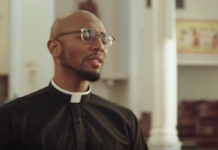
BY ERIC GROTH
Catechesis is the act of passing on the faith. While Wikipedia defines digital as “usually referring to something using digits, particularly binary digits,” practically speaking we have come to know it as referring to electronic communication technologies.
In our Catholic faith, as is the case in every other aspect of life, the two have collided and morphed into a very common concept: digital catechesis.
Simply stated, digital catechesis involves the use of electronic media to communicate Gospel messages and truths.
In his final apostolic letter, St. John Paul II declared, “Everything possible must be done so that the Gospel might permeate society, stimulating people to listen to and embrace its message” (Te Rapid Development, 2005, 8).
Digital technologies are not something created by secular culture that we, the Church, are now forced into utilizing. Quite the opposite: These technologies come from the magnificently creative mind of God who will go to any means necessary to communicate with and love his children. Even, dare I say, using such social media platforms as Facebook, Twitter, Instagram, and Snapchat!
Teens spend an average of 9.5 hours a day in front of some sort of screen. Thousands of digital messages and communications are pushed their way every hour. There is no turning back or reversing this trend.
As a Church, we must embrace and use digital media. It’s essential.
Here are two key areas in which digital and catechesis can morph to enhance your youth ministry:
1. ENGAGEMENT:
Two questions we need to ask are:
✱ How are we communicating and marketing our youth ministry programs to teens, and to
their families?
✱ What means are we using to get information to them?
While it is important for us to understand our diocesan and parish social media policies when it comes to engaging minors, there are many appropriate and approved ways of communicating with them. Ideally a suite of social media tools should be utilized: parish website, Facebook, Instagram, group chat, and email, to name a few.
2. ENCOUNTER:
The content of our digital communications and messages to teens can and should lead them to encounter Christ. Shared Scripture passages, quotes from saints, beautiful pictures and iconic images, inspiring music, thought-provoking short films and movie clips, and contemporary stories can do just that.
Whether we are advertising a youth ministry event or creating program content, we must creatively and intelligently embrace all the media at our disposal. After all, as Jesus declared, even if we stay silent, “the stones will cry out” (Luke 19:40).
Eric Groth is president and CEO of ODB Films. For more see ODBFilms.com
This article was originally published in Catechist magazine, January, 2017.
Image credit: Piksel Stock / Shutterstock 112125140




